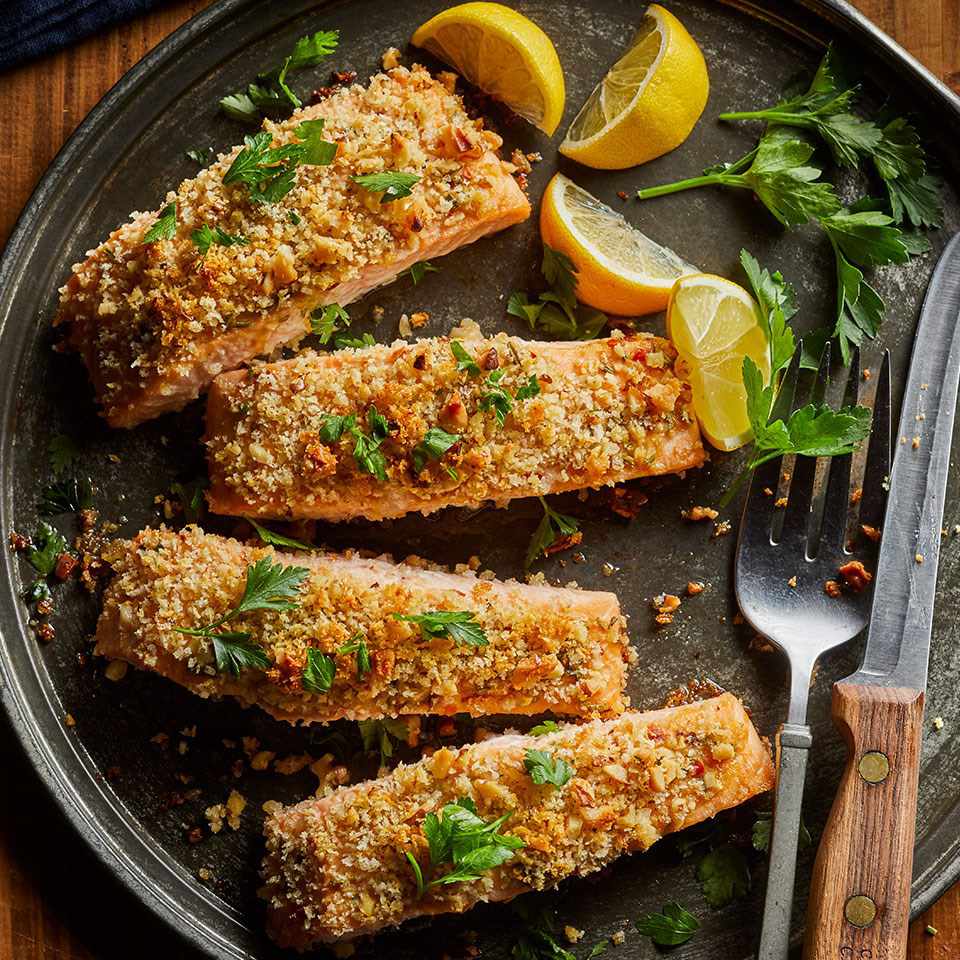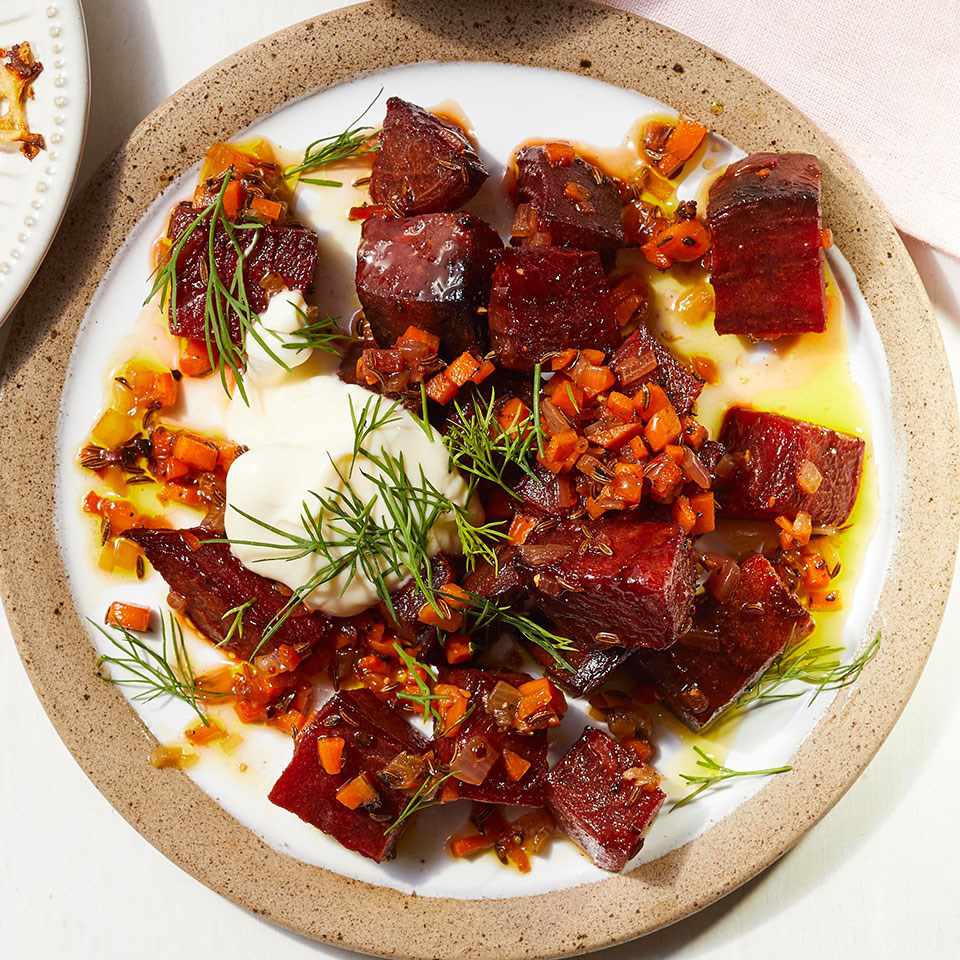I recently travelled to Norway and made visits to two major cities: Oslo, the nation's capital, and Trondheim, the country's third largest city and the nation's food capital. And while this was my third trip to this Scandinavian wonderland, I had never really paid super close attention to the food scene. I felt I was lacking in my complete understanding of this once-prominent Viking haven, so I decided I needed to go with the intent of immersing myself into the country's food culture while channeling my own Norse roots. Here's what I learned about the Nordic diet while I was in Norway.
First, What Is the Nordic Diet?
"Just like the Mediterranean diet, the Nordic diet, is a very healthy way to eat," says EatingWell's Nutrition Editor, Lisa Valente, MS, RD. "With a focus on seafood, vegetables and limited processed foods, the diet is naturally rich in omega-3s, vitamins, minerals and antioxidants. Plus, you'll likely get more fiber than on a typical American diet and eat some fermented foods, like yogurt, both of which are important for a healthy gut."
The Nordic diet is also touted to help reduce your risk for developing chronic diseases. Lisa Valente says, "The Nordic diet has been linked with a lower risk of diabetes, weight loss and better blood pressure."
Nordic Diet Foods
Recipe pictured above: Walnut-Rosemary Crusted Salmon
Traditionally, the Nordic Diet includes:
- Seafood
- Berries, as other fruits (with exceptions) don't typically thrive in Nordic countries
- Fermented foods
- Root vegetables and other cold-tolerant produce
It's hard to understand the Nordic Diet (the way the Norwegians perceive it) without first understanding a little about the geography of this country. The nearly endless coastline and a plethora of fjords make this the breadbasket of seafood. Glaciers still exist (mostly to the north) from the last ice age but it isn't all frozen tundra. A powerful current carries warm water north up the Norwegian coast where it's met with the clear and extremely cold waters from the Arctic. The convergence of these two water systems creates a veritable cornucopia that has made Norway one of the largest seafood exporters (it first began exporting fish in the 12th century) in the world.
From Trondheim, I was able to take a ferry to the island of Hitra that has become synonymous with quality seafood. My first experience upon arrival was sitting down to a dinner that included oysters, crab, mussels, scallops and shrimp that was all caught right off the coast.
As part of my trip, I was allowed access to a crab factory that during peak season (June to November) processes over 50 tons of crab daily. I also discovered that the scallops are all sustainably collected from the ocean bottom by divers who hand pick them. This prevents large dragging operations from disturbing the habitat of the scallops while only picking those that are ideal for ending up on your next platter.
You can't talk about seafood in Norway without mentioning salmon. And while some salmon are naturally harvested from the open sea, most are farmed in large netted areas in the open water along the coast. These deep water channels allow the fish to live in an environment that simulates a wild existence (as closely as possible). The fish remain strong as they have to continually fight to swim against the current which makes Norwegian salmon a much sought-after commodity.
Nordic Diet Rules and Principals
Recipe pictured above: Roasted Beets with Caraway & Crème Fraîche
Choose local
Trondheim is located in the county of Trøndelag. These counties are much larger than what we are perhaps used to in the United States. It's more of a region. This region is responsible for 23 percent of the entire country's agricultural production.
I'm always seeking out ways to utilize local farmers (i.e. farmer's markets) to source my meats and vegetables. Though when winter arrives, I retreat back to my local grocery store and obtain products from countries knowing that it spent days, perhaps weeks, traveling to end up in my shopping cart. Norwegians feel (and so do I) that valuable nutrients are lost the longer it takes for food to make it from farm (and often the sea) to table. They prefer to obtain as much of their essential diet from foods that can be grown or harvested close to home.
Due to its relatively small size and the abundance of residents living so close to the coast, food is easily within a day's transport to a potential diner's table.
Eat seasonally
Every restaurant I ate at during my visit offered a list that would often change from season to season (if not week to week). And while Norway does import some items that it just can't possibly grow or obtain from either land or sea, most of it sustenance is garnered from within it border.
I spoke with a local chef who has written several cookbooks that are based on foraging and obtaining foods from nature. Meat and fish have been staples in the Norwegian diet for thousands of years and he continues to hunt, fish and forage for the bounty that can be obtained in his own backyard.
And just like their ancestors, Norwegians feast during the harvest and stock their modern-day storehouses (aka pantries) with the best of the season's yield for the months ahead. This involves preserving and drying essential foods (freezing fish and meat) that would otherwise be missed until the following season.
Focus on more than just food
Norwegians areactive people. Spending time outdoors is an essential part of the culture and this doesn't end when winter arrives. The further you travel northward, the sun barely rises above the horizon during the winter. However, this doesn't keep them from engaging in their outdoor experiences. Hiking and skiing during those cold winter days are just as paramount to their daily lives. And it's not just about outdoor activities, Norwegians walk or bike to many places in their daily lives. Even large cities, including Oslo, have accessible outdoor experiences within walking distance or a short ride on public transpiration.
Charleston, West Virginia—where I live—is essentially similar to much of the United States in that when winter arrives, residents retreat inside and outdoor endeavors are often replaced with gym visits and binge watching all those shows you postponed watching all summer. And while I can't walk to my nearest grocery store or market (regardless of the season), I have embraced the idea of escaping the warm confines of my home as winter approaches to take a long walk or hike on some of the nearby trail. Yes, I'll have to dress appropriately and it might sting initially, but doesn't breathing fresh air make us all feel more alive.
The Bottom Line
Recipe pictured above: Panko- & Parmesan-Crusted Baked Scallops
Norway constantly ranks high on lists that rank countries based on happiness. Regardless of the outlet, Norway is always in the top five. And while gastronomic creativity isn't one of the key criteria for determining happiness, perhaps it should be added to the list.
You don't have to go all the way to Norway to embrace the Nordic Diet (though I would never deter anyone from visiting such an amazing country). And, while you may not have access to freshly caught Norwegian salmon (or any other cold water fish), there are some things you can do to bring the principals of the Nordic Diet into your own home.
Here are a few ways to incorporate the Nordic Diet into your daily life:
- Shop local. The longer an item spends traveling to its destination, the more nutrients that are potentially lost. Farmer's markets are a great way to support local farmers and get locally sourced and seasonal fruits and vegetables.
- Choose sustainable seafood options (here's a helpful how-to guide).
- Can and preserve vegetables and fruits. Take advantage of harvest time and plan for the off season and enjoy those same foods until the following season.
- Reduce consumption of red meats and avoid processed meats.















0 nhận xét :
Post a Comment